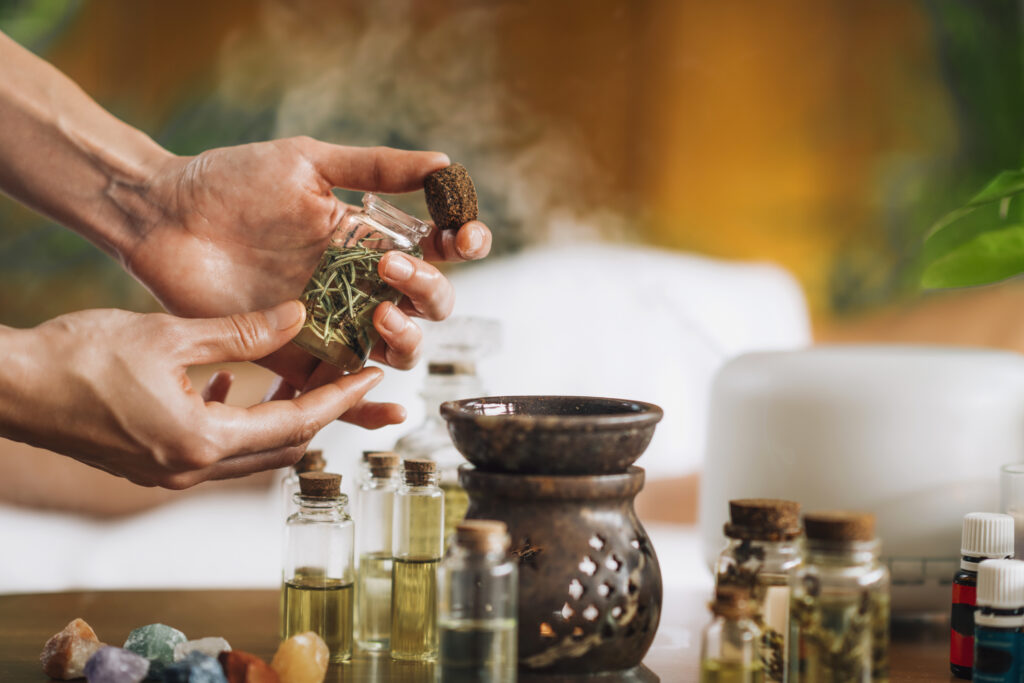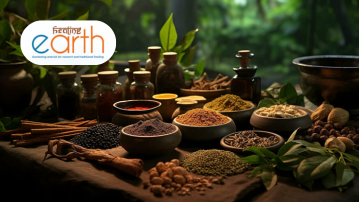Courses
Home
Course
Healing Earth Multi-specialty Ayurveda hospital Perceived in the year 2010, with the specialty braches of Ayurveda headed by specialized Ayurvedic doctors from all over India which blends with the excellence of service and healing techniques.Healing Earth is a pioneer in the arena of authentic Ayurveda treatment with a proven track record. A highly motivated and committed team of doctors and therapists ensure the highest levels in the quality of treatment and medicinal preparations.
After propagating a comprehensive and renewed scientific perspective on Ayurveda, for the world to experience. Healing earth introducing “HEALING EAGNA”-Crash Ayurveda course for Health professionals and also for the common public who wants to learn the basics of Ayurveda for leading Healthy and Natural life as well as healthy society.

We offer different types of courses from basics of Ayurveda to advanced practical programs for Ayurvedic practitioners. Our Professional courses are designed and developed by our expert doctors according to guidelines given by W.H.O and Ayush, the central body which is controlling and standardizing Ayurvedic practice.
Course

Ayurveda is a holistic system of medicine that uses a constitutional model. Its aim is to provide guidance regarding food and lifestyle so that healthy people can stay healthy and individuals with health challenges can improve their health.
Diet and Nutrition is the most important because from proper wholesome and balanced diet all the body constituents- dosha, dhatu and mala are balanced naturally. That is why it is said that Food is a pillar of life. Food is not only essential for our physical wellbeing but it provides nutrition for our mind as well.
Ayurveda teaches you to recognize your self - your constitution, so that you can have the correct food, herbs and exercises for improving health and preventing diseases. This course helps Ayurveda professionals to get in depth of practical application of Ayurveda diet and its basic principles and a clear understanding of the fundamental principles of Ayurvedic Nutrition including the Energetic Principals, Food items and their metabolism. Also it aims in getting expertise in knowing skills of treating the diseases through diet.
Duration of Course: 3 days (18hrs)
Timings: 6 hours/day
Who Can Join?
Healthcare professionals of Home sciences, Internees of AYUSH, dietitians, dietary assistants, physiotherapist and Yoga teachers and All Professionals working with Hospital and Healthcare organization and any interested candidates of all graduates of science.
Ayurveda is the science which deals in complete heath care system having traditional system of medicine. Ashtanga Ayurveda deals with 8 branches of Ayurvedic treatment and in that Prasuti trantra, obstetrics and gynecology forms once of the main branch which submerges in Kaumarabrithya.
Ayurveda pronounces the ideal guidelines to be followed during pregnancy. It states the ideal way and the right time for conceiving the baby. It is followed by the mode of life that needs to be observed religiously by the pregnant lady.
This course is meant for those who are willing to practice obstetrics and gynecology in Ayurveda.
Our course deals with Sthanika Yoni karmas, uttara basti and other noninvasive procedures done in many gynecological issues in a systematic manner with practical demonstration. Also knowledge is shared regarding Garbha samskara.
Duration of Course: 2 days (12 hrs)
Timings: 6 hours / day
METHODOLOGY:
Course is divided into less of theoretical classes and more of practical demonstration along with interactive session.
WHO CAN JOIN?
Internees & Healthcare professionals of Ayurveda.
Ayurveda defines health as ‘Swasthya’, which can be explained as ‘state of balanced metabolism, equilibrium of physiological functions (vata, pitta, kapha), proper production & elimination of waste products, normal functioning of bodily tissues with contentment state of mind, sense & self (consciousness).’
The key to prevention of disease & to maintain balance in state of health, Ayurveda emphasizes preventive and healing therapies along with various methods of detoxification and rejuvenation. These therapies are dealt under ‘Panchakarma’ and Bahya karmas.
This course helps the Ayurveda doctors to specialized in Panchakarma and keraliya karma’s where both practical and theoretical knowledge of around 50 treatments will be thought with the method of preparation its procedure, materials required for the procedure, preparation of the therapy room, and preparing the health seeker for the therapy .pradhana karma paschat karma, precautions during the treatment and after the treatment, Mode of action of each therapy, Indications and contraindications etc.
DURATION OF COURSE: 10 days (60 hrs)
TIMINGS: 6 hours /day
METHODOLOGY:
Course is divided into less of theoretical classes and more of practical demonstration along with interactive session. Practical training is given as hands on practice in therapy rooms and Ayurveda kitchen according to course format. Doctors are allowed to do every practical by themselves to learn better. Time given to the practical demonstration vary depending on number of candidates, Procedure and their willingness to perform.
Practical classes are conducted with well trained Ayurveda therapists under observation of Expert Doctors.
Who Can Join?
Internees & Healthcare professionals of Ayurveda.
Prakriti is an inherent nature of an individual determined at the time of your birth, which cannot be changed during your lifetime. It is the basic constitution of your body and mind formed by the unique combination of three doshas. According to Ayurveda following are the factors, which determine the prakriti of the foetus: ?Time and season during the conception. ?Doshic dominance in the uterus. ?Condition of the sperm and ovum. ?Maternal food and lifestyle.
Types of Prakriti
Prakriti is of two types:
1. Sharirika prakriti
2. Manasika prakriti
There are seven types of sharirika prakriti based on permutation and combination of doshas:
1. Vata prakriti.
2. Pitta prakriti.
3. Kapha prakriti.
4. Vata-pitta prakriti.
5. Pitta-Kapha prakriti.
6. Kapha-vata prakriti.
7. Tridosha- Vata pitta kapha prakriti.
And three types of manasika prakriti based on three gunas: Saatvika, Rajasika, Tamasika.
The concept of prakriti makes Ayurveda unique from other medical systems. Selection of treatments, medicine is different for each individual depending on their prakriti. According to Ayurveda, each individual is different. Hence, they need to be thoroughly examined for prakriti (physically and mentally), agni, dosha and dhatus before starting any medications
THE CONCEPT OF HUMAN PHYSIOLOGY IN AYURVEDA
Tridosha theory is the foundation of the Indian System of medicine, Ayurveda. To explain the function-correlative, substantive and reproductive of the living matter, the ancient scholars of Ayurveda postulated the concept of Tridosha-the theory of the three somatic humours.
The three humours are known as Vata, Pitta and Kapha.
This theory forms the basis of Ayurvedic physiology, pathology and pharmacology.
Though, the term ‘Dosha’ means ‘the disturbing factor’, it has got definite physiological importance in normal state. Basically three ‘Dosha, s are responsible for maintenance of homeostasis in the body, and health is nothing but a state of equilibrium of these ‘Tridoshas
Disease is manifested as a result of disturbance in the state of equilibrium among these ‘Dosha’s
The central concept of Ayurveda medicine is the theory that health exists when there is a balance between three fundamental bodily humours or doshas.
Each Dosha is responsible for regulating an essential aspect of organism function, connected to a recognised definition of life
VATA
ata is the Air principle necessary to mobilize the function of the nervous system, energy of movement, functions of nuclear and neurological activity.
PITTA
Pitta is the fire principle which uses bile to direct digestion and hence metabolism in to venous system, energy of digestion and transformation, functions of mitochondria, hormonal and enzymatic activities.
KAPHA
Kapha is the water principle which relates to mucous, lubrication, structure, secretory activities and carrier of nutrients in to the arterial system.
HOMEOSTASIS:
Imbalance in the state of bodily-tissues is known as ‘Disease’ and equilibrium is called Health’. (Ca.Su. 9/3, Ca. Sa. 6/18). Aim of this entire stream of science (Ayurveda) is to re-establish the state of equilibrium among different tissues (Ca. Su. 1/53).
‘Dhatusamya’ is the term given for homeostasis in Ayurveda. In Susruta’s view, the life on this Universe is maintained because of three opposing factors known as Sun, Moon and the air.
The Sun exerts a drying effect on earth whereas the moon is coolant and strengthening in nature. Air brings about all types of movements. In exactly similar manner, the body is Sustained by three opposing factors called ‘Vata, pitta and kapha. (Su. Su. 21/8).
CONCEPT OF A CELL:
Caraka has explained that the body parts can be divided and re-divided into innumerable individual components called ‘Paramanus’. These are innumerable because of their huge number, highly minute structure and limited perceptive ability of sense organs (ca.sa7/17)
This statement indicates that there existed a concept of minute and numerous individual living units in the body. Today we call such microscopic units by the name ‘Cell’.
‘Anu Srotas’ is another such very similar term, probably indicative of a cell. Some scholars Even held the view that the living body is nothing but the resultant of aggregation of such Innumerable ‘Srotamsi’. (Ca.Vi. 5/4).
‘Srotamsi’ is the plural form of ‘Srotas’. The term ‘Srotas’ means an individual ‘Cell’



